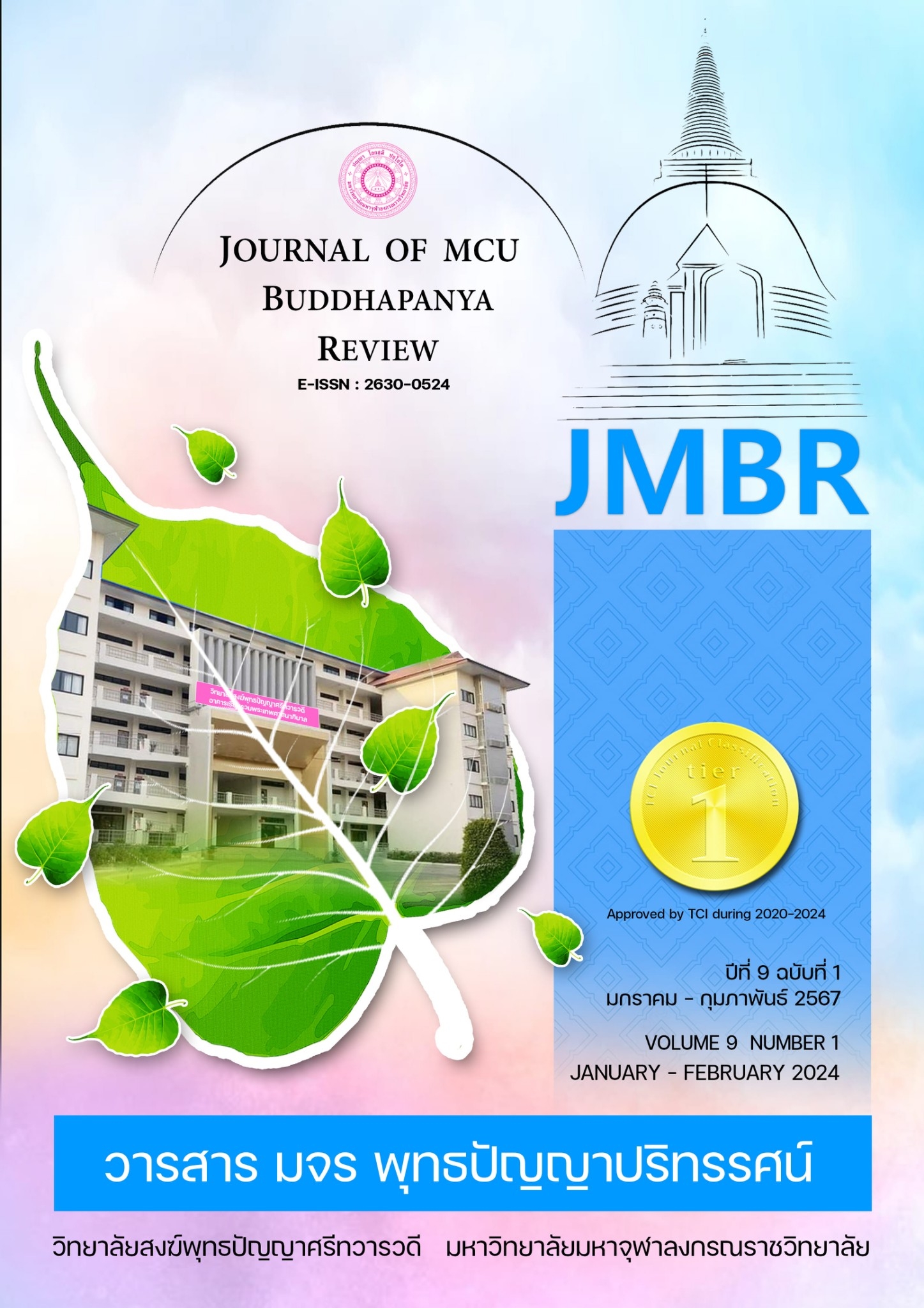การศึกษาสภาพปัจจุบันของการเรียนรู้เรื่องอุทกภัย เพื่อส่งเสริมการเรียนรู้ภูมิสารสนเทศของนักเรียนระดับชั้นมัธยมศึกษาตอนปลาย
คำสำคัญ:
ภูมิสารสนเทศ, อุทกภัย, มัธยมศึกษาตอนปลายบทคัดย่อ
บทความวิจัยนี้มีวัตถุประสงค์ เพื่อศึกษาสภาพปัจจุบันในด้านความรู้ ความเข้าใจ เพื่อพัฒนากิจกรรมการเรียนรู้สาระภูมิศาสตร์ และเพื่อเสริมสร้างทักษะการรับมือกับอุทกภัยของนักเรียนมัธยมศึกษาตอนปลาย เป็นงานวิจัยเชิงคุณภาพ กลุ่มเป้าหมายนักเรียนระดับชั้นมัธยมศึกษาตอนปลาย โรงเรียนทรัพย์ไพรวัลย์วิทยาคม จังหวัดพิษณุโลก ปีการศึกษา 2565 กลุ่มผู้ให้ข้อมูลที่สำคัญ ได้แก่ ผู้เชี่ยวชาญด้านข้อมูลอุทกภัย ผู้เชี่ยวชาญด้านภูมิสารสนเทศ และบุคลากรครูด้านการสอนวิชาสังคมศึกษาของระดับชั้นมัธยมศึกษา โดยใช้การเลือกแบบเจาะจง (Criterion Based Selection) เครื่องมือที่ใช้ในงานวิจัย มี 3 ชนิด คือ 1) แบบสัมภาษณ์เชิงลึก 2) คู่มือกิจกรรมการเรียนรู้ 3) โปรแกรมสำหรับภูมิสารสนเทศ Quantum-GIS (Q-GIS) วิเคราะห์ข้อมูลเนื้อหา เขียนบรรยายเชิงพรรณนาและตรวจสอบความน่าเชื่อถือแบบสามเส้า
ผลการวิจัย พบว่า ในสภาพปัจจุบันครูผู้สอนมีการใช้สื่อการเรียนรู้รูปแบบการบรรยายจากหนังสือเรียน ทั้งนี้ครูผู้สอนยังขาดองค์ความรู้ลักษณะเฉพาะด้านภูมิสารสนเทศ และนักเรียนยังขาดความรู้ในเรื่องของภูมิสารสนเทศเป็นอย่างมาก และผลการสร้างกิจกรรมการเรียนรู้พบว่าผู้เรียนสามารถปรับใช้โปรแกรม Quantum-GIS (Q-GIS) ต่อการเรียนรู้เรื่องอุทกภัยได้เกิดองค์ความรู้ด้านการเรียนรู้ทักษะภูมิสารสนเทศ ทักษะการรับมืออุทกภัย สามารถนำไปปรับใช้กับชีวิตประจำวันได้ และครูผู้สอนสามารถนำองค์ความรู้เพื่อพัฒนากิจกรรมการเรียนรู้ได้
เอกสารอ้างอิง
Akekawee Pitakthanatchakul. (2014). Education in the modern world. Nonthaburi: Sukhothai Thammathirat Open University.
Aunya Boochayan, Wanomporn Pahanich, Poom Sartsin. (2018). Vol. 20 Special Issue. Journal of Humanities and Social Sciences Surin Rajabhat University, 20(2).
Carbonneau, K. J., & Marley, S. C. (2013). 2 Activity-Based Learning Strategies. In International guide to student achievement (pp. 291-293). Routledge.
Daochalongkhow. (2020). Geography. From https://sites.google.com/site/daochalongkhow/45-khatham-phumi-sastr/31-1
Dorothy Ives-Dewey. (2009). Teaching Experiential Learning in Geography: Lessons from Planning. Journal of Geography. 09(107), 4-5.
General knowledge about Quantum GIS program. (2019). Geographic Information Division.
Guo, F., Lane, J., Duan, Y., Stoltman, J. P., Khlebosolova, O., Lei, H., & Zhou, W. (2018). Sustainable development in geography education for middle school in China. Sustainability, 10(11), 3896.
Indicators and core learning subjects in the social studies subject group religion and culture. (2020). Bangkok: Bureau of Academic Affairs and Educational Standards.
Indicators and core learning content. (2020). Bureau of Academic Affairs and Educational Standards.
Jeremy Chen. (2015). Geospatial Education in High Schools: Curriculums, Methodologies, and Practices. Geospatial Technologies and Geography Education in a Changing World. 15(1), 67-76.
Marsha Alibrandi and Donna Goldstein. (2015). Integrating GIS and Other Geospatial Technologies in Middle Schools. Geospatial Technologies and Geography Education in a Changing World. 15(1), 53-65.
Suthat Eka. (2019). Activity-based learning. From https://www.krumontree.com/www/documents/137-abl-activity-based-learning.html
ดาวน์โหลด
เผยแพร่แล้ว
รูปแบบการอ้างอิง
ฉบับ
ประเภทบทความ
สัญญาอนุญาต
ลิขสิทธิ์ (c) 2024 วารสาร มจร พุทธปัญญาปริทรรศน์

อนุญาตภายใต้เงื่อนไข Creative Commons Attribution-NonCommercial-NoDerivatives 4.0 International License.



